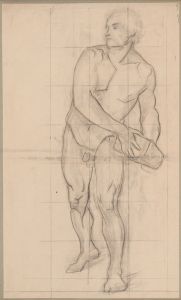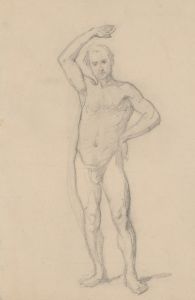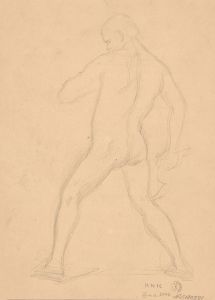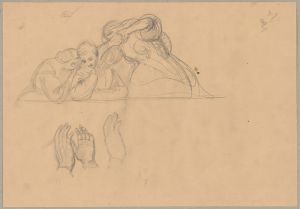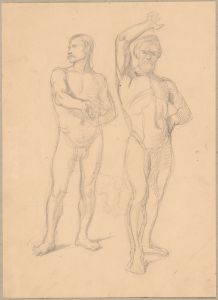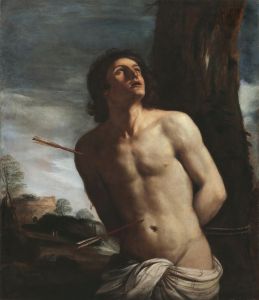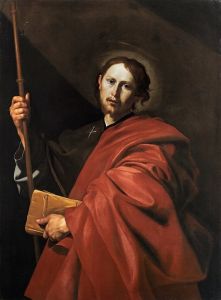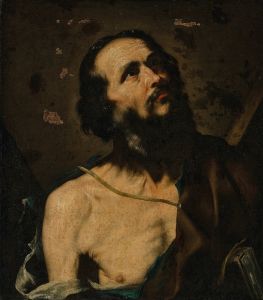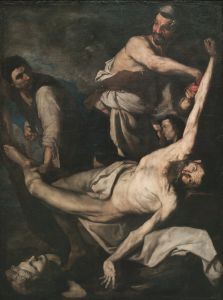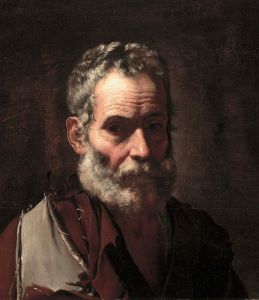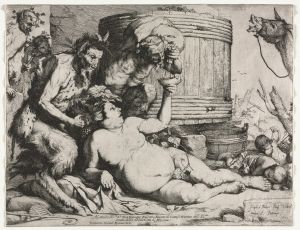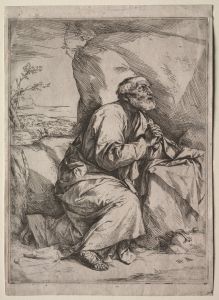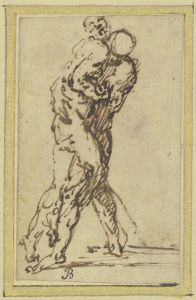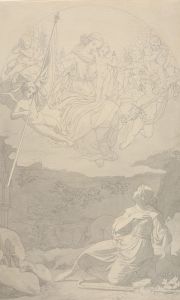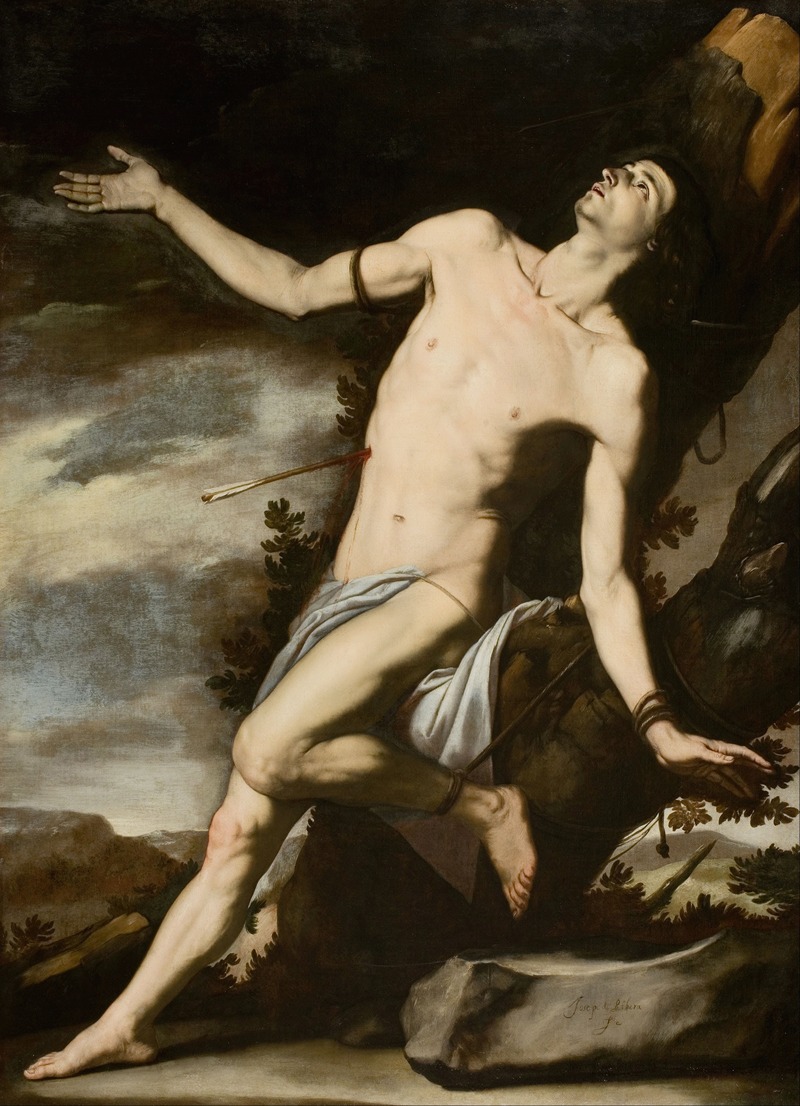
Saint Sebastian
A hand-painted replica of Jusepe de Ribera’s masterpiece Saint Sebastian, meticulously crafted by professional artists to capture the true essence of the original. Each piece is created with museum-quality canvas and rare mineral pigments, carefully painted by experienced artists with delicate brushstrokes and rich, layered colors to perfectly recreate the texture of the original artwork. Unlike machine-printed reproductions, this hand-painted version brings the painting to life, infused with the artist’s emotions and skill in every stroke. Whether for personal collection or home decoration, it instantly elevates the artistic atmosphere of any space.
Jusepe de Ribera's "Saint Sebastian" is a notable work of art that exemplifies the dramatic intensity and realism characteristic of the Spanish Baroque period. Ribera, a Spanish painter who spent much of his career in Italy, is renowned for his powerful depictions of religious and mythological subjects, often rendered with a stark realism and emotional depth.
"Saint Sebastian" is one of Ribera's many interpretations of the Christian martyr, a subject that has been popular among artists for centuries due to its potential for dramatic expression and exploration of human suffering. Saint Sebastian, a Roman soldier, was martyred for his Christian faith, traditionally depicted as being tied to a tree and shot with arrows. This imagery provides a poignant opportunity to explore themes of pain, endurance, and divine faith.
Ribera's version of Saint Sebastian is distinguished by its intense realism and the artist's masterful use of chiaroscuro, a technique that employs strong contrasts between light and dark to achieve a sense of volume and three-dimensionality. This technique is evident in the way Ribera highlights the muscular form of Sebastian's body, emphasizing the physicality and vulnerability of the saint. The light falls dramatically on Sebastian's figure, drawing the viewer's attention to his serene expression amidst the suffering, a common theme in depictions of martyrs.
The painting is also notable for its emotional impact. Ribera captures a moment of introspection and calm resignation in Sebastian's face, contrasting with the violence of his wounds. This juxtaposition invites viewers to reflect on the spiritual strength and inner peace that faith can provide, even in the face of physical torment.
Ribera's attention to anatomical detail and texture further enhances the painting's realism. The depiction of Sebastian's skin, the tautness of his muscles, and the texture of the ropes binding him are rendered with meticulous care, showcasing Ribera's skill as a draftsman and his deep understanding of human anatomy.
The background of the painting is typically dark and undefined, a common feature in Ribera's work that serves to focus attention on the central figure and heighten the emotional intensity of the scene. This use of a dark, ambiguous setting also adds a timeless quality to the painting, allowing the viewer to concentrate on the universal themes of suffering and redemption.
Ribera's "Saint Sebastian" is housed in various collections, as he painted multiple versions of the subject throughout his career. Each version reflects his evolving style and the influence of his contemporaries, as well as the broader artistic trends of the Baroque period.
Overall, Jusepe de Ribera's "Saint Sebastian" stands as a powerful testament to the artist's ability to convey deep emotion and spiritual themes through his mastery of realism and dramatic lighting. The painting remains a significant example of Baroque religious art, admired for its technical excellence and its profound exploration of the human condition.





